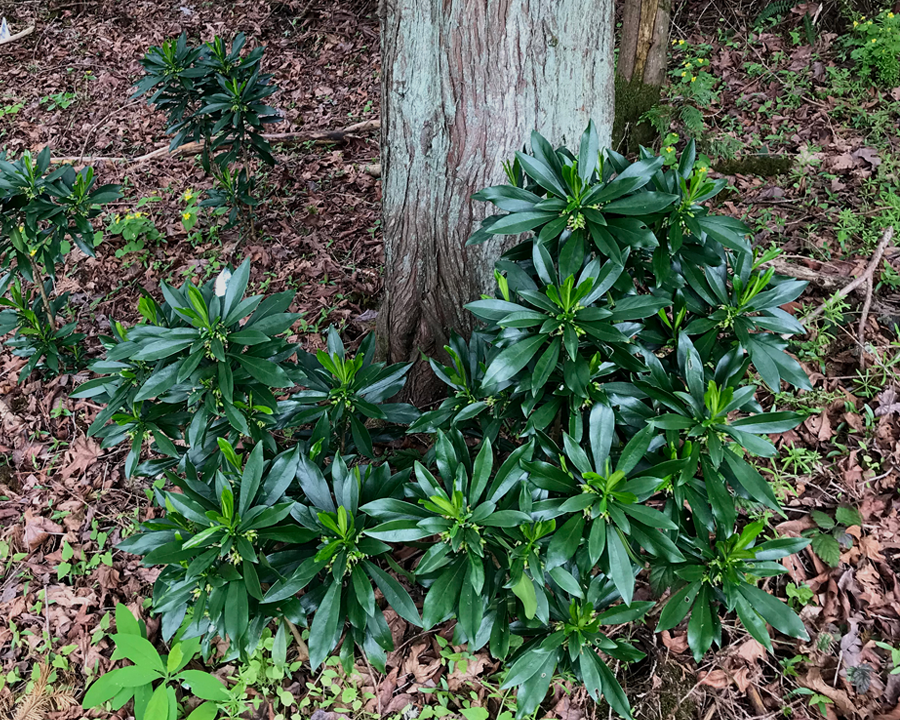7 Ways to Get Rid of Spurge Laurel (Daphne) in Vancouver, BC
Safe, Effective Removal of This Toxic Invasive Plant by Vancouver’s Leading Eradication Team
Need help with your yard? Get your free quote today!
Get a Free Quote! Spurge laurel (Daphne laureola) is one of Vancouver’s most aggressive—and dangerous—garden invaders. Although it looks like an ornamental shrub, it’s toxic to humans and pets, spreads quickly through forests and gardens, and outcompetes native plants in shady, wooded areas.
Spurge laurel (Daphne laureola) is one of Vancouver’s most aggressive—and dangerous—garden invaders. Although it looks like an ornamental shrub, it’s toxic to humans and pets, spreads quickly through forests and gardens, and outcompetes native plants in shady, wooded areas.
At Ascent Yard Care, we specialize in invasive species removal across Greater Vancouver, including full-service Spurge laurel (Daphne) eradication. Here are 7 of the most effective ways to get rid of this plant—safely and for good.
1.
Manually Uproot the Whole Plant (Including the Taproot)
The most reliable way to eliminate Daphne is by pulling the entire plant—roots and all.
- Use gloves (Daphne sap is toxic)
- Pull when soil is moist to avoid breakage
- Remove the full taproot, not just the stem
- Use a weed wrench or root-puller for larger plants
Warning: Incomplete removal often leads to regrowth.
2.
Cut the Stem and Immediately Apply Herbicide
If digging is not practical or the plant is mature, use the cut-stump method:
- Cut the Daphne stem as close to ground level as possible
- Immediately apply a low-toxicity herbicide to the fresh cut surface
- Treat regrowth as needed in the following months
This method is highly effective for dense infestations on steep slopes or forest edges.
3.
Remove Seedlings Before They Establish
Spurge laurel spreads via seed, and seedlings often pop up near the parent plant. These are easier to manage:
- Pull by hand with gloves
- Remove when they’re small (under 1 ft tall)
- Check regularly for new growth around cleared areas
Seedlings can sprout for years from seed banks in the soil, so re-check sites annually.
4.
Never Mow or Mulch Over Daphne
Unlike surface weeds, Daphne won’t die from cutting alone. In fact, mowing or mulching it can:
- Spread seeds
- Stimulate resprouting
- Increase the toxic plant material left behind
Always remove the root or treat the stump—don’t just cut it down and cover it.
5.
Bag and Dispose of Plants Properly (Never Compost)
Spurge laurel is toxic and should not be composted. Instead:
- Bag all plants and debris in thick contractor bags
- Leave them to dry out and die
- Dispose of them as invasive plant waste (not green bin)
We always handle debris safely and responsibly at Ascent Yard Care.
6.
Restore the Area with Native Ground Covers
After removal, disturbed soil is vulnerable to re-infestation. To prevent this:
- Apply a thick layer of mulch (4–6 inches)
- Replant with native, competitive species like sword fern, salal, or Oregon grape
- Maintain ground cover to block light and suppress new seedlings
This not only controls weeds—it restores ecosystem health.
7.
Hire a Professional Invasive Plant Removal Team
Spurge laurel is toxic, persistent, and often found in tricky locations—slopes, wooded areas, shaded gardens. At Ascent Yard Care, we offer:
- Full root and stump removal
- Herbicide treatments (when needed)
- Safe handling and disposal
- Soil stabilization and native replanting
- Multi-visit eradication programs for large sites
We’ve removed thousands of Daphne plants from residential, strata, and municipal properties across Vancouver.
Areas We Serve
We provide Spurge laurel (Daphne) removal throughout:
- Vancouver
- North Vancouver
- West Vancouver
- Burnaby
- Richmond
- Surrey
- Coquitlam
- New Westminster
- Delta
- Langley & nearby areas
Don’t Wait—Get Rid of Spurge Laurel Before It Spreads
Daphne may seem manageable now, but it spreads fast and is toxic to people, pets, and ecosystems. Let Ascent Yard Care remove it thoroughly, safely, and professionally.
Victoria’s best now in Vancouver.
